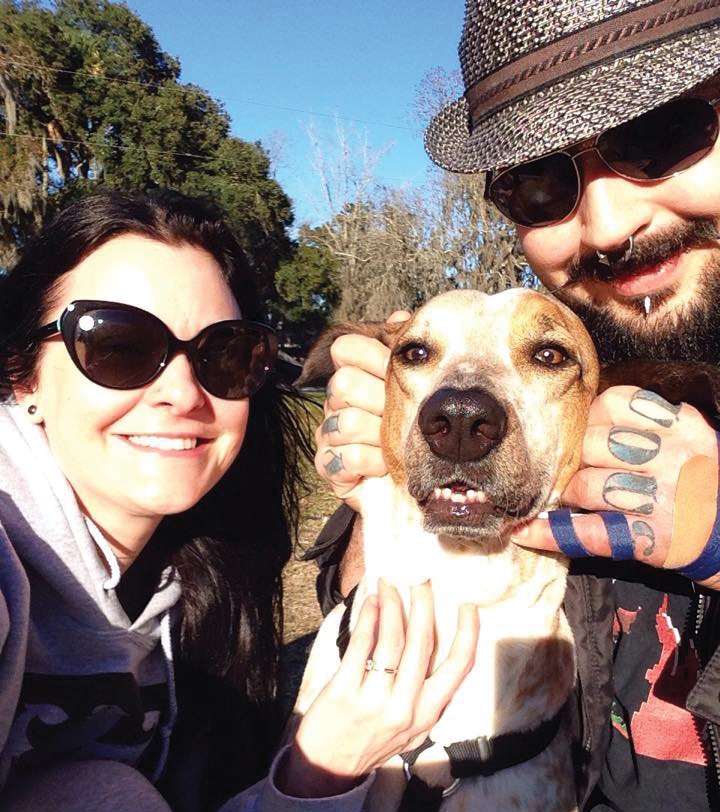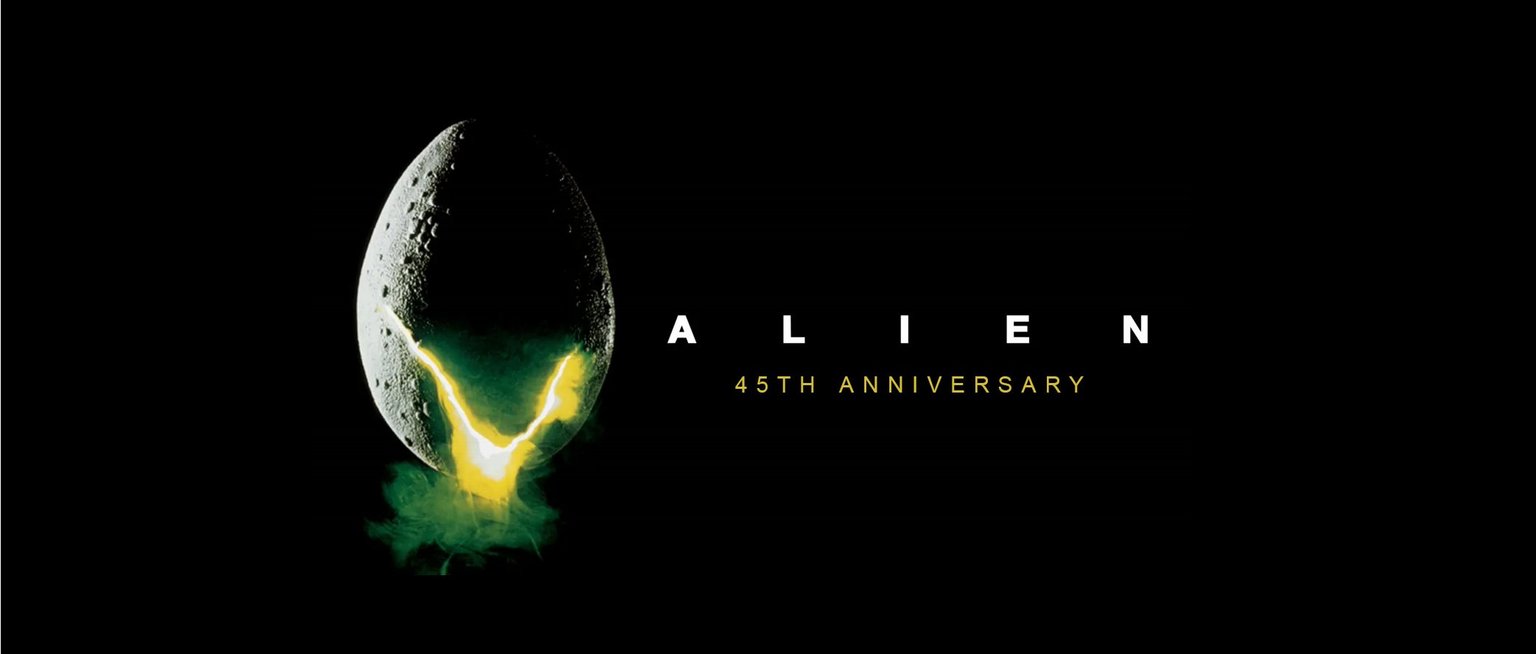Daith Piercing Q&A
with Natalie Feinauer, Professional Body Piercer
Q-When did you first become interested in the art of tattooing and piercing?
I’ve long-loved tattoos and piercings; however, I never thought I would find myself in the industry. I lived the corporate life and worked in various office and managerial positions for 15 years. In 2011, I lost my job due to the economy. My husband Paul (who goes by “Squablo”), a tattoo artist of 21 years, had encouraged me to give piercing a shot for a long time, but I consistently refused. Eventually, I caved in 2013. If you would have asked me five years ago what direction I saw my life going, I never would have dreamed I would one day be able to say “a professional piercer, and I’m in love with my craft!”
Q-When did you and your husband open your tattoo/piercing shop and why did you decide to do it?
Paul and I have wanted our own studio for at least five years. Originally, the plan was for him to tattoo and I would run the business side of things. That all changed when I realized if I wanted to be in the industry as an owner, I had to be IN it—not just own it. In late July 2017, we bought the shop we had been working at for nearly three-and-a-half years. Currently, we are transitioning into a high-end tattoo and piercing studio, and we decided to name our new business Virtue Studios.
Q-What do you like best about working in the tattoo and piercing industry?
The best part of my job is making people happy, sparkle, and shine. People get piercings for all kinds of reasons, whether they are celebrating an occasion, having a fun girls’ night out, going through some sort of tough time in their life, or dealing with body image issues, to name a few. I get to help someone who is unhappy become someone who can’t stop smiling at their new reflection once they’ve seen their new piercing. How could I feel anything less than amazing after seeing that kind of transformation? We, as piercers, have the power to create an amazing experience for a client, as well as long-lasting positive effects. I’m not trying to say we are changing the world here, but it’s a beautiful thing to take part in, this process of helping someone achieve a positive self-view.
Q-What is a daith piercing? In your experience, are there particular reasons that draw people to this particular piercing?
A daith piercing is a piercing that goes through the crux of the helix, which is the fold of cartilage that extends from the inner bowl (conch) of the ear, and continues into the frontal helix behind the tragus. This piercing has garnered a lot of attention and is being dubbed the “migraine piercing”. Many, and by many, I mean about 99% of the daith piercings I perform, are on clients who are trying to heal their ailment. I do not take this job lightly, and I make sure to explain to each client that I am NOT a medical professional. Outside of stating to clients that there are no studies that have either proven or disproven that this piercing is able to get rid of migraines and headaches, I don’t discuss any other medical topics other than what is noted on their consent forms. I find it imperative as a professional to draw the line between what my profession does and does not do. Any piercer who encourages this type of piercing as a cure, implies, or outright states that it will help in any way, should be avoided. Misrepresentation of our profession is blatant at that point, and the person cannot be trusted. We are piercers, not medical practitioners!
Q-What should someone wanting a daith piercing expect at a piercing appointment?
At the appointment, and at any professional piercing appointment for that matter, examination of the anatomy should be the first thing that happens. Not everybody is suited for each piercing. I have turned down my fair share of daith requests. Anyone willing to accept your money without examining you first should be avoided. If your anatomy will work well with the piercing, the next step is jewelry sizing. At this point, you will decide what jewelry you want depending on what is available in your size. It’s important to note that jewelry used in any initial piercing should only be made of implant-grade materials such as: titanium (ASTM-F136) and steel (ASTMF138), niobium, or solid 14k or 18k gold. The jewelry should also be ethically-made in North America because the quality standards are high here. There is much more to the jewelry than just the material; the finish is also extremely important, as it must be perfectly smooth to ensure an easier healing process. Any scratches on the surface of the jewelry will scratch at the inside of the freshly-pierced wound. It is also important to consult with your piercer about any metal allergies you may have.
Next, you will be asked to fill out a consent form, so make sure you bring a photo I.D., like a driver’s license. As far as the actual procedure goes, it will vary from piercer-to-piercer. Some may use tools, and some will not. However, there are certain things that every piercer should ALWAYS do. First, your jewelry and any tools the piercer uses should be sterilized. Don’t be afraid to ask the studio to see their last spore test on their autoclave (it is recommended that these tests be done on a monthly basis), or ask about their sterilization procedures. Some piercers will work out of sterile pouches where the tools are bagged, pre-sterilized, and stored. Others will work out of what’s called a Statim Autoclave, the method I use, where cleaned tools, jewelry, and needles are loaded into a cassette and sterilized separately for each client. All tools are decontaminated after procedures and before being sterilized. The piercer should be wearing gloves throughout the procedure, and use sterile gloves during the actual piercing process.
In the state of Florida, where our studio is located, all piercing procedures must be done with sterile gloves, but this law varies from state-to-state. It is important to note there is a difference between sterile gloves and ones that come out of a box all mixed together. Sterile gloves are packaged individually, or as a pair in their own sterile pouches. After or before the procedure, you should be given thorough verbal and written instructions on how to take care of your new piercing and where to buy the proper aftercare products (such as Sterile Saline Wound Wash) if it is not offered by the studio or business onsite. It’s important to know that cartilage piercings like the daith can take nine months or longer to fully heal. A commitment to taking care of the piercing through the entirety of the healing process is important. Should you have any questions prior to or after the procedure, contact your piercer and they will take the time to answer them. Sometimes, studios have counter help who can also answer questions.
Q-How would a person go about finding a reputable parlor to get a daith piercing?
The best advice I can give is DO YOUR RESEARCH! Ask friends with well healed and good-looking piercings where they got theirs done. Look at the reviews of the places you are considering, and visit a couple of them until you feel 100% comfortable with the studio and the piercer who is going to be modifying your body. One great source of information is the Association of Professional Piercers website, www.safepiercing.org, where you can try to find an APP Member close to your city. Disclaimer: not all great piercers are members, and not all members are great piercers. APP membership is for piercers who are following a higher standard in their piercing practices as far as materials, sterilization, and safety go. This is why doing your own research in general is important!
Q-Do you have any additional thoughts or comments you would like to share?
I want to add that as a person who has suffered with migraines since I was 12, I understand the desperate feeling of people who are truly suffering. I was first put on meds at that age before even being tested. I have undergone multiple MRIs, EKGs, EEGs, blood tests, you name it, since I was 14. I feel it’s highly important to say that piercers are not able to offer medical relief. If you are seeking a piercing for that reason, that’s fine; however, please do not go to anyone who is claiming daith piercings are a cure or any kind of medical treatment. For piercers to insinuate or advertise this piercing helps cure migraines is very close to attempting to practice medicine without a license. I tell my clients this: I get it. I hope you get the relief you want out of this piercing, but worst case scenario, you end up with a rad piercing that has many incredible pieces of jewelry options to choose from.
Betty Crook Gives BIAAZ an Earful on her Pain-Reducing Experience with Daith Piercings
This article is for information purposes only; it should not be taken as a medical suggestion or advice. The opinions presented in this piece are those of the author alone. The Brain Injury Alliance of Arizona and its employees do not endorse the practice of daith piercings. It is recommended that you consult your doctor or specialist before making long-term and/or semi-permanent changes to your body.
“I will never sink; I will always swim, and float when needed.” — Betty’s motto
Hi, I’m Betty Crook, a 56-year-old mother and Navy wife. I was born and raised in Moorhead, Minnesota, and have been lucky enough to live on both the west and east coasts, as well as overseas on a little island called Guam. I love to say my babies are bi-coastal, since our son was born in California and our daughter in Maryland. In the late 90s, our family moved to Virginia Beach, Virginia, where my husband and I have lived for the past 20 years. My husband has retired from the Navy after 26 years of service.
I used to be a stay-at-home mom and was very active with my kids, Cub Scouts, and school and naval activities. I was also an active volunteer with the March of Dimes, PBS, and Save the Bay, organizations which I discovered while I was in high school. My last job was at a bank, where I worked for over 10 years. However, life as I knew and loved it took a difficult turn on Sunday, February 7, 2010. My son was away at his first year in college, and my husband was traveling with the Navy. That night, I told my daughter I had to run out for a few things and would be home before 8:00 p.m. It had snowed earlier that day, which was unusual. I got home at 7:50 p.m. when it was already very dark outside. My daughter didn’t know I had pulled into the driveway, which was icy. Upon stepping out of my car, I found myself falling backwards, reaching out to thin air for support. I remember hitting my butt hard on the edge of the driveway and falling back on the sidewalk that is edged with bricks. The left side of my head hit the bricks and I passed out. When I finally regained consciousness (not realizing I’d lost it in the first place), I rolled over and felt the worst pain of my whole life. Somehow, I still had my keys and cell in my hand. The only two things I was able to focus on in the moment were my daughter and the pain. I hit speed dial to ring our home phone, and started screaming from the pain. My daughter saw my car and came out to help me inside. I remember wanting to change out of my cold, wet clothes and get warmed up. I couldn’t reach my husband, so I called my mother-in-law, who is a retired RN, and we went over the normal questions of things I should know and remember. I told her I would see a doctor the next day, even though I just wanted to stay home in bed.
Although I had previously experienced three concussions, this injury was different. Physically, I had a big bump on my head and was sore for several weeks after the fall, but that pain eventually faded. The brain injury symptoms did not. A scary incident 27 days after my initial injury made me feel like there was a wash of warm water under my skin and over part of my brain, and half of my body went numb, so I went to see the doctors at the Naval Hospital Emergency Room. My husband, who had rushed home from the Naval Base when I called and told him what was happening, tried to explain to the ER doctors about my fall and injuries. It didn’t seem to help any of them figure out what was wrong with me. When I later went to see my primary care doctor, she recommended me to see a neurologist, who fortunately understood me and assured me that everything I was experiencing was real. He diagnosed me with Post- Concussive Syndrome, a type of traumatic brain injury (TBI). By the time I found out what was going on with me, two months had already passed. Until my neurologist informed my boss about the seriousness of my situation, I wasn’t allowed to take time off work. I felt like a mess. Looking back, I realize part of the problem was due to the fact I didn’t receive very much rehabilitation or therapy after my injury, which would likely have helped me improve greatly.
Some of the more frustrating symptoms that resulted from my brain injury included difficulty speaking, vertigo, which I experienced all day, every day for about five months, and major light and sound sensitivity issues for two years. To this day, there are months of my life that I’m missing and can no longer remember.
It wasn’t until December 2015 that I learned about daith piercings when a friend of mine told me she was thinking about getting one. She didn’t have a TBI, but did get migraines. She is also the type to jump on the bandwagon and try new things if she thinks it will help her feel better. My girlfriend ended up having a daith piercing in one ear first and eventually had both ears done. I was curious, so I looked up some websites for more information, and emailed my niece, who works as a therapist with trauma patients in Denver, for advice. I was not worried about if it would be painful.
I talked about it with my husband and thought, “well, I have two tattoos already, and if this [piercing] could help even a little, that would be better than nothing.” I had the piercing done on February 10, 2016 in my left ear, as the left side of my head is where I got my migraines. At first, I was worried over the nerve damage the piercing might cause—feelings of pins and needles or something worse. However, I knew I could always remove the earring if I wanted to, and the hole from the piercing would heal. I kept a notebook about how everything was going for months.
For me, having the piercing wasn’t bad at all. The hardest part was picking out the earring I wanted! Overall, my pain level has been good. I had a great piercer too; it was someone I got along with and trusted, which I think makes a huge difference. Also, the business I used for my piercing is well-known and very clean. Everything was explained clearly to me, and they made sure I knew all I needed to know. The whole process happened so fast, and yes, I was sore for a while.
After the soreness wore off, I no longer noticed my headaches and migraines. Wow! “This is nice!” I thought, but I also wondered if it was just the honeymoon stage. I still took my meds for nerve pain daily, and kept extra meds for migraines as needed. The first month passed without any problems, as did the second. I started to think there might really be something to this daith piercing thing after all. I would feel some numbness on bad weather days, but no migraines like I had before, at least, until June of 2016, when I was extremely overwhelmed and stressed for a couple weeks, which seemed to trigger my migraines again.
I do like to think, though, that even when I have a migraine now and then, they are not as bad as they could be. Part of the reason I decided to keep a notebook about my daith piercing experience is due in part to the fact that currently, there are no real medical studies or evidence about the procedure’s effectiveness. I hope the records I’m keeping will be helpful for other TBI patients who are considering getting the piercing themselves. Overall, I think the piercing has helped me to a degree, and as a bonus, it looks pretty cool (so I’ve been told).
If you are unsure about whether or not a daith piercing might help ease your migraines, I would suggest trying the following: when the pain starts, pinch down hard on the skin where the piercing would be (in the innermost cartilage fold of the ear), and hold it for as long as the migraine lasts. If you feel some relief, it’s possible a daith piercing could be an option for you. If you do decide to take the piercing plunge, make sure to follow the follow-up care instructions of your piercer. Keep the pierced area clean using the products the piercer recommends; using other cheaper products can cause an infection. The piercing needs to be fully healed before you put in a different earring. It can take between six months to a full year to completely heal. If possible, I would also advise not sleeping on the side of your head where the piercing was done until it heals and feels better. Ultimately, you know your body best, and you should do what works well for you.
ABOUT BRAIN INJURY ALLIANCE
OF ARIZONA
The Brain Injury Alliance of Arizona (BIAAZ) is the only statewide nonprofit organization dedicated to improving the lives of adults and children with all types of brain injuries through prevention, advocacy, awareness, and education. BIAAZ also houses the Arizona Brain Health Resource Center, a collection of educational information and neuro-specific resources for brain injury survivors, caregivers, family members, and professionals.
What began in 1983 as a grassroots effort has grown into a strong statewide presence, providing valuable life-long resources and community support for individuals with all types of brain trauma at no charge.
The Brain Injury Alliance of Arizona:
- Works with the Congressional Brain Injury Task Force
- Houses Arizona Brain Health Resource Center
- Hosts the Statewide Opioid Use Disorder & Cognitive Impairment Workgroup
- Deploys a Statewide Opioid Use Disorder & Cognitive Impairment Response Team with peer support, training and family wraparound services
- Facilitates the Brain Health Advisory Council
- Manages a Statewide Neuro Info-Line 888-500-9165










